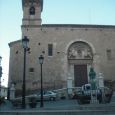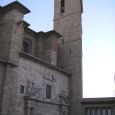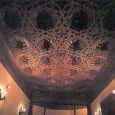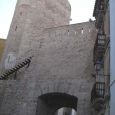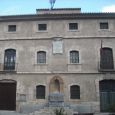Segorbe
Advertisement
By Road
A-23 Une Sagunto with Somport
CV-25 Link Segorbe with Liria .
CV-200 Link Segorbe with Ain .
CV-213 Link Segorbe with Almonacid Algimia by Gaibiel .
CV-215 Link Segorbe with Onda (Castellon) .
By Railroad
There are a station and a halt (Segorbe-city and Segorbe-Arrabal respectively) integrated into the C-5 line core near Valencia, to stop trains to Valencia, Caudiel and Castellon de la Plana in Sagunto. They also perform regional trains stop line Valencia - Zaragoza
Church of St. Martin
The current building dates from 1612 and the Dominicans erected on a former Augustinian monastery, founded in turn on a former Beguine of St. Martin. is of baroque style early, noted for his sobriety decorative. The apse topped with a scallop and chapels have a number of altarpieces in golden wood carving paintings of the seventeenth century.
Cathedral Basilica of Segorbe
The Cathedral Basilica of Segorbe started in the thirteenth century building attached to the wall in style Gothic of which only a few traces remain in the west wing, hidden vaults in some chapels, bearing walls, the tower of Santa Barbara, the bell tower and the cloister. It is remarkable Gothic cloister, trapezoidal shaped, constrained by the irregularity of the wall to which it is attached, as it is one of the rarest specimens, very attractive in its simplicity.It was started to be built in the thirteenth century. It has a single nave with no transept and dome, with chapels between the buttresses and octagonal head.There are reports of the performance of a teacher named Juan de Burgos in the fifteenth century. The medieval building was consecrated in 1534.
Church of St. Peter
We began to build in the middle of the thirteenth century and is, therefore, the oldest of Segorbe. However, nothing remains of its original layout, due to major reforms in the centuries sixteenth and nineteenth centuries.
Cathedral Museum
Cathedral Museum is located in the cloister of the Cathedral, built in the XIII century and contains a collection of the most important Gothic painting Valencia. contains works by authors such as Martin Torner and Juan de Juanes, highlighting the ancient altar of the cathedral, the work output of the workshop Macip Vincent between 1525 and 1531, and a relief of the Virgin of the Milk made in Carrara marble pro Donatello. This visit includes as well same access to the temple, which highlights the fresh and the choir .
Oil Museum
It was installed in 2005 on an old mill restored. have been preserved original elements used to produce olive oil, explained through visual, touch screens and information panels. In the basement is projected audiovisual explaining the evolution and historical significance of the oil, while rooms explain the methods of harvesting the olives, oil processing and the types of olives in the area. On the ground floor there is a cascade of oil, audiovisual explanatory themed room in the olive millennium the Maultasch, through which summarizes the history of Segorbe. In 2007 he received the award Pirma the Spanish Association Olive Municipalities to the dissemination of Culture of the Olive.
Museum of Archaeology and Ethnology Segorbe
The Museum of Archaeology and Ethnology Segorbe is installed in the former barracks of the square of the Inns, near the aqueduct and the medieval towers and Botxi Jail. The building was constructed in the year 1792, in neoclassical style. Its construction was made in part with materials extracted from the ancient castle fortress of Cerro de Sopena, long abandoned and used as a quarry materials.On the first floor of the central building is the archaeological section, where four rooms in which spells out the different archaeological remains found in various excavations in the region and some contributions from private collections.
Interpretation center of the medieval towers
Interpretation center of the medieval towers, is located in the towers of the prison and Verdugo, restored for this purpose. In the dungeons of the prison tower has been installed an executed audivisual that tells her story, while in other plants is explained by the history panels and audiovisual medieval city. On the terrace there are some steel panels that complement the panoramic views of the city who are from there. On the way round, on the wall, you can access the Verdugo Tower, which explains how to perform this tirp of towers in the fourteenth century and you can see how the aqueduct was introduced in the city.
Crypt of the Cathedral
The Cathedral crypts Segorbe are dated between centuries XIII and XIV, and were emptied at the beginning of the twentieth century. At present they are restored and turned into an interpretive center for the Diocese of Segorbe the crypt itself and the rituals surrounding death in the existing Middle Ages.
City Hall
City Hall was Located in the building of which was the palace of the Duke of Medina Celi Segorbe and started in the sixteenth century and acquired by the municipality in 1858. Inside are three covers of marble and jasper, from the Cartuja de Vall of Christ in the neighboring town of Altura. The Chamber is adorned by a magnificent paneling of the fourteenth century, Moorish style with coffered octagonal and four-pointed stars. Another paneling is one of the halls of Segorbino Circle in the ground floor is paneled boxes and stars Italian type diamond tip, with the old, is among the largest in the Valencian Community. Are also worth highlighting several plots doors interlacing Mudejar.
Prison Tower
The tower of the fourteenth century is next to one of the ancient gates to the city. Outwardly plant is cylindrical with a larger diameter lower body and probably more primitive than the former, in which lie the cells were used as prisons. The second body having a diameter of 8.70 m. and is divided internally into two octagonal plant with Gothic vaults, loopholes and communication to the terrace by a spiral staircase embedded in the wall. The total height is 21.30 m.
July - October


